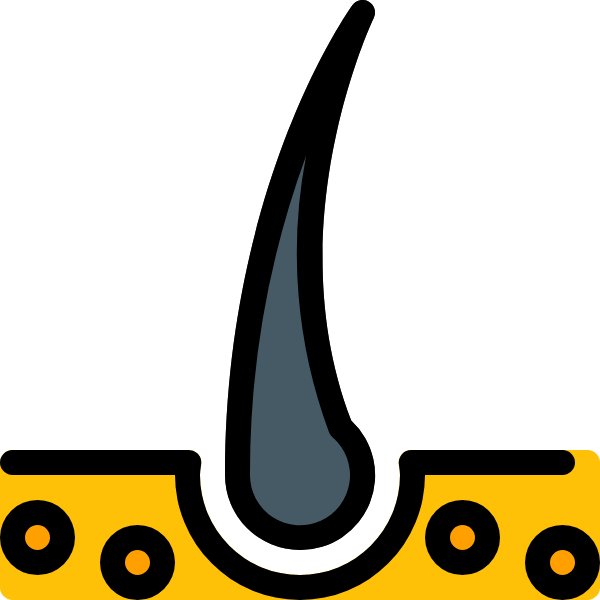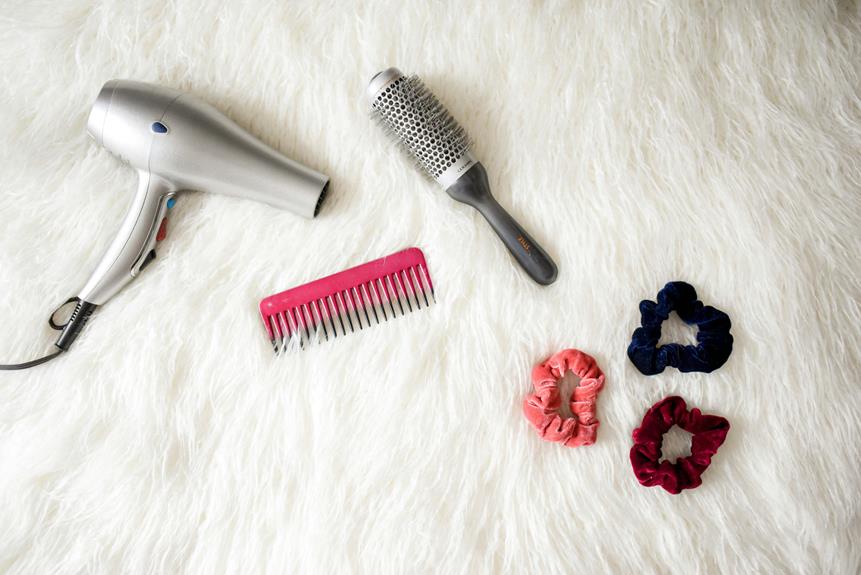Imagine effortlessly gliding through your tangled locks, leaving them smooth and knot-free. With a detangling brush, you can bid farewell to the frustration and pain of unruly hair. This handy tool is designed to gently untangle knots without causing breakage or damage. Whether you have curly, straight, or textured hair, there's a detangling brush out there for you. In this article, we'll guide you through the benefits, choosing the right brush, techniques, common mistakes, and maintenance tips to keep your detangling brush in top shape.
Benefits of Using a Detangling Brush
When you use a detangling brush, you can experience the benefits of easier and pain-free hair detangling. One of the main advantages of using a detangling brush is its effectiveness in removing knots and tangles from your hair. Unlike regular brushes, detangling brushes are specifically designed to glide through your hair without causing any pain or discomfort. The unique bristle configuration and flexibility of these brushes make them highly effective in untangling even the toughest knots.
Another advantage of using a detangling brush is that it can help minimize hair breakage. Traditional brushes often pull on the hair strands, leading to breakage and split ends. However, detangling brushes are gentler on the hair, reducing the risk of breakage and promoting healthier-looking locks.
In addition to being effective and gentle, detangling brushes are also time-saving. The specially designed bristles help to separate the strands of hair, making it easier to untangle knots quickly. This can be particularly beneficial for those with long or thick hair, as it reduces the time and effort required to achieve smooth, tangle-free hair.
How to Choose the Right Detangling Brush for Your Hair Type
To ensure the best results for your hair, it is essential to choose the right detangling brush based on your specific hair type. Different types of detangling brushes are available on the market, each designed to cater to different hair textures and needs. When selecting a detangling brush, it is important to consider the material it is made of, as different materials offer various benefits and drawbacks.
One common type of detangling brush is made of plastic. Plastic brushes are affordable and lightweight, making them easy to use. They also tend to have widely spaced bristles, making them suitable for thick or curly hair that is prone to tangling. However, plastic brushes may not be as durable as other materials and may not provide the same level of detangling for fine or fragile hair.
Another option is a brush made of metal or metal alloy. Metal brushes are often used for fine or straight hair, as they can effectively detangle without causing breakage. However, they may not be suitable for thick or curly hair, as the metal bristles may not be able to penetrate through the hair easily.
Natural bristle brushes are another popular choice. These brushes are often made from boar bristles, which are gentle on the hair and scalp. They are ideal for distributing natural oils throughout the hair, promoting shine and reducing frizz. However, natural bristle brushes may not be suitable for thick or curly hair, as they may not provide enough detangling power.
Proper Techniques for Using a Detangling Brush
Now let's delve into the proper techniques you should employ when using a detangling brush for your hair. Whether you have straight hair or curly hair, a detangling brush can be a lifesaver when it comes to removing knots and tangles. Here are some essential detangling brush techniques to help you achieve smooth and manageable hair.
Firstly, it is important to start with dry hair. Wet hair tends to be more fragile and prone to breakage, so it's best to detangle your hair when it's dry. Before using the detangling brush, apply a leave-in conditioner or a detangling spray to make the process easier.
When using a detangling brush for curly hair, it's crucial to work in sections. Divide your hair into smaller sections and focus on one section at a time. This will prevent further tangling and ensure that you are thoroughly detangling each section.
Start by gently combing the ends of your hair and gradually work your way up to the roots. Be patient and take your time, especially when encountering stubborn knots. If you encounter a particularly stubborn tangle, hold the hair below the tangle to avoid pulling on the roots.
Always remember to be gentle with your hair. Use smooth, downward strokes instead of forcefully yanking the brush through your hair. This will minimize breakage and keep your hair healthy.
Lastly, clean your detangling brush regularly to maintain its effectiveness. Remove any hair or debris caught in the bristles and wash it with warm water and mild shampoo. Allow it to air dry completely before using it again.
Common Mistakes to Avoid When Using a Detangling Brush
To achieve the best results with a detangling brush, it is important to avoid these common mistakes. By avoiding these pitfalls, you can effectively detangle your hair without causing breakage or hair loss.
One common mistake is using the wrong type of detangling brush for your hair type. Different brushes are designed for different hair textures, so it's essential to choose one that suits your needs. For example, if you have thick, coarse hair, opting for a brush with widely spaced bristles can help prevent breakage. On the other hand, if you have fine, fragile hair, a brush with softer, closer bristles is more suitable.
Another mistake to avoid is using too much force when brushing your hair. While it may be tempting to aggressively brush out tangles, this can lead to hair breakage and damage. Instead, start at the ends of your hair and gently work your way up, using short, controlled strokes. This method allows you to gradually remove knots without causing unnecessary stress to your strands.
Additionally, it's important to avoid brushing your hair when it's wet, as this is when it is most vulnerable to breakage. Instead, use a wide-toothed comb or your fingers to detangle wet hair, and save the detangling brush for when your hair is dry or slightly damp.
Tips for Maintaining and Cleaning Your Detangling Brush
To properly maintain and clean your detangling brush, it's important to follow these simple steps. Detangling brush maintenance is crucial to ensure that it remains effective in removing knots and tangles from your hair. Here are some cleaning tips to keep your detangling brush in top condition.
First, remove any hair or debris that may have accumulated in the bristles. Using your fingers or a wide-tooth comb, gently pull out any tangled hair. Be careful not to pull too hard, as this can damage the bristles. Once the hair is removed, you can proceed with cleaning the brush.
Fill a bowl or sink with warm water and add a small amount of shampoo or gentle cleanser. Swirl the brush in the soapy water, making sure to clean all the bristles thoroughly. You can also use an old toothbrush to scrub away any residue. Rinse the brush under running water to remove any soap residue.
After cleaning, gently shake off any excess water and pat the brush dry with a clean towel. Avoid using a blow dryer or placing the brush near heat sources, as this can cause damage. Leave the brush to air dry completely before using it again.
To maintain your detangling brush, store it in a clean and dry place when not in use. Avoid placing heavy objects on top of it, as this can deform the bristles. Regularly inspect the brush for any signs of damage or wear and replace it if necessary.


